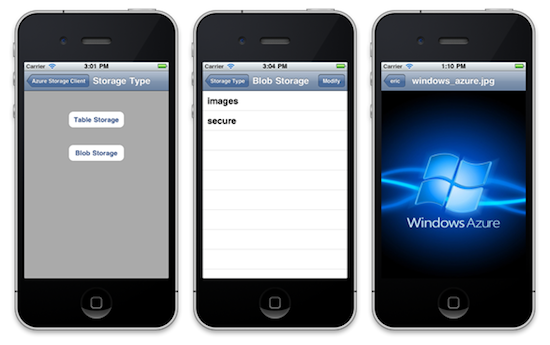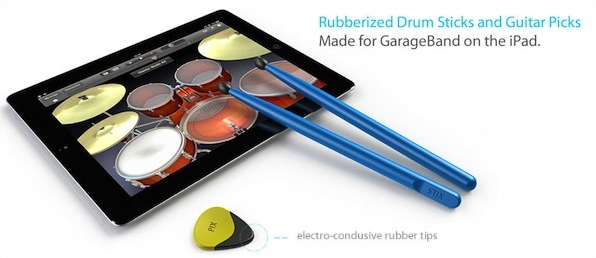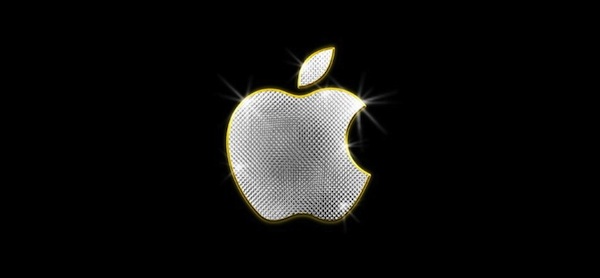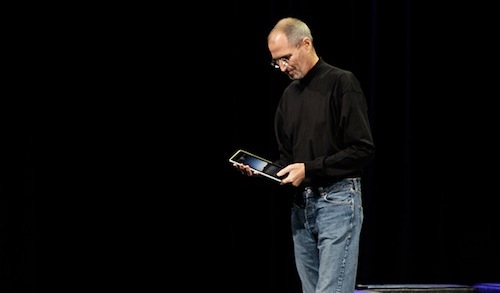Defaulting to a variety of Apple keys for media, Exposé, and the Dashboard, the functions keys have to be continually activated by holding down the Function (fn) key on your keyboard. Function keys by default offer some powerful functionality; F8 is used to activate Spaces or Yojimbo; the F9 through F11 keys manage windows; and applications such as Photoshop can make extensive use of this top row for various functions. If you are going to be making use of the functions while working in a specific app, Palua for Mac allows you to toggle the function keys on and off so you don’t have to mash the fn key with each command. More interested in getting use out of those function keys than changing the volume? From the menubar or a simple ⌥⌘⇥ (option-command-tab) keystroke, Palua will activate and deactivate the function keys as needed when working in various projects. Used in combination with Keyboard Maestro, you could create some pretty powerful workflows where apps automatically launch and the function keys are activated for immediate use. Palua is available on the Mac App Store for only 0.99 cents, which can be purchased and activated at login so you’ll always have the function keys readily available with a quick keyboard shortcut.
Palua for Mac Toggles Your Function Keys
Microsoft Azure Toolkit for iOS Now Available
Following the release for Windows Phone 7 in March, Microsoft today announced the availability of the Azure toolkit for iOS, which can be downloaded now from GitHub. Similarly to Amazon Web Services, Microsoft’s Azure is a cloud platform hosted on the company’s servers that allows developers to build, host and scale web applications. Today’s iOS toolkit includes resources and services for developers to integrate Azure in their iPhone and iPad apps, including an Objective-C library to work with Azure services (such as storage and push notifications), documentation, a sample iOS app with full Azure storage integration, as well full source code for the aforementioned Objective-C library with Xcode project files. More details on Azure Toolkit for iOS can be found here.
Last March we released the Windows Azure Toolkit for Windows Phone 7, which provided a set of generic services for Windows Azure. This toolkit was the first step in enabling developers to build native experiences on multiple platforms using Windows Azure. As the next step in this process, today we’re pleased to announce the release of the Windows Azure Toolkit for iOS. This toolkit contains resources and services designed to make it easier for iOS developers to use Windows Azure.
Downloads:
- https://github.com/microsoft-dpe/watoolkitios-lib
- https://github.com/microsoft-dpe/watoolkitios-samples
- https://github.com/microsoft-dpe/watoolkitios-doc
Microsoft has also release a Cloud Ready package to simply the process of setting up Azure services, and it has announced the release of an Android toolkit for next month. [via The Next Web]
iPhone and iPad Drive Softbank’s Profit Growth
As reported by The Wall Street Journal, Japanese mobile carrier Softbank (the third largest carrier in the country by number of subscribers) has announced record operating profit for the January - March quarter with net profit surging to Y47.41 billion from the Y1.85 billion posted last year. Thanks to high demand for iPhones and iPads, the carrier managed to move away from last year’s “unusual” profit loss, due to the adoption of 3G mobile services, and the discontinuation of 2G. Softbank is the only carrier that sells the iPhone in Japan, and the high demand for the device in a market otherwise saturated by alternative smartphones helped the company achieving record profit during the quarter.
The expansion of the smartphone market led by the iPhone and iPad was a huge factor that contributed to the growth,” said Softbank President and Chief Executive Masayoshi Son.
Softbank’s earnings also reported average revenue per user – also known as ARPU – rose to Y4,210 (from Y4,070) thanks to the iPhone’s growth in Japan. The iPhone became Japan’s best selling cellphone last October, and Softbank later announced a new promotion to give users an iPad for free upon subscribing to the carrier’s two-year data plan.
Queen Of England Demands An iPad
The Queen of England has apparently ordered her staff to buy her an iPad after the newly married Prince Will and his brother Prince Harry showed off theirs to her on a recent gathering at Buckingham Palace.
The Princes, the Queen’s grandsons, gave her a demo of how the iPad worked which, as a royal insider told The Sun, led her to be impressed and “particularly taken with how easy it was to use, the large screen and how light it was” The insider also notes that the Queen is fairly “switched on” for an 85 year old woman, saying “It was only a matter of time before she asked someone to go and get her one.”
“The Queen has a mobile phone as well as the iPods, so an iPad is the logical progression. She thinks it will be great to keep her entertained on all the long trips she has to make.”
The same royal insider says that the Princes think her reaction is hilarious, but also “love the fact that their gran wants an iPad and think she’s really cool”. The iPad won’t be the first Apple product that the Queen owns either, she previously bought a £169 silver iPod in 2005 and was given a new iPod by Barack Obama in 2009, which was loaded up with happy snaps from the Queen’s US visit in 2008.
[Via The Sun]
Flipboard Triples Usage and Doubles Users In Two Months
Flipboard, an iPad app that aggregates content from your social networks, has in the last two months seen close to a tripling in daily usage. An average day will now bring between 8 and 9 million “flips” compared to what was 3 to 4 million flips just two months ago – flips roughly equating to page views for a website.
The CEO, Mike McCue, revealed the information in a chat last week and pointed to a number of factors that he believes contributed to the increase in popularity. Foremost in his mind is the release of version 1.2 of Flipboard on March 10th which greatly improved speed and brought other general improvements to the app. Then, of course, was the release of the iPad 2 which not only brought more users but has also made Flipboard even faster with its improved A5 processor.
McCue did also mention that the number of users has doubled – likely for the same reasons, although he declined to comment on how many users they now have in total. Meanwhile, Flipboard is continuing their work on a Flipboard iPhone app which is slated for release sometime this summer. Quizzed on how the iPhone app might work by AllThingsD, McCue said that it is being designed as more of a “weekday tool” catered towards power users that will more directly utilise real-time news and conversations.
[Via AllThingsD]
The Pix And Stix Project Will Let You Rock Out On GarageBand “For Real”
GarageBand is an app that everyone who owns an iPad should at least try out, regardless of your musical talent, it’s just a superb example of an app that is brilliantly designed and built for a touch screen. Yet for those that do end up using it for more than just the occasional mess around, you may find that although the iPad’s touchscreen is better than a mouse for playing the drums or guitar, it is still a little bit lacking for what you want.
Well luckily for those of you who do find that, some clever folks have decided to start manufacturing rubberized drumsticks and guitar picks for GarageBand on the iPad. They’ve been designed to work on the iPad’s touchscreen by implementing electro-conductive rubber tips, which will also mean it should be perfectly fine to use without smashing the iPad’s nice glass screen!
The designers of the Pix and Stix are running a Kickstarter-esque funding round, where they are selling a pair of drumsticks and a pick for $14.95 in order to reach a funding goal of around $8000. Just like Kickstarter, if they don’t get the required funding, you can also rest assured you won’t end up paying for them. At this stage they think they will be selling the drumsticks and picks in the three colors of black, blue or gold metallic paint, although they note that these colors are subject to change.
If you recall the Wallee, which we discussed as one way to elevate your iPad last year, the Pix & Stix project is coming from those same people. So if you’re interested in helping these guys fund their newest project and get your own Pix and Stix, head over to the Pix and Stix website.
[Via Gizmodo]
Apple Overtakes Google And Becomes World’s Most Valuable Brand
A new survey on the value of brands has placed Apple as the world’s most valuable brand, ending Google’s four-year reign at the top of the list. The ‘Brandz’ survey, done by global brands agency Millward Brown, found that the Apple brand is worth an estimated $153 billion, which was an 84% increase from last years survey.
Global brands director of Millward Brown, Peter Walshe, said that Apple’s pointed to a number of factors that has led to Apple’s rapid rise in brand valuation. He said that their meticulous attention detail and presence in corporate environment were two of the reasons that they have behaved differently to other consumer electronics manufacturers and went on to say:
Apple is breaking the rules in terms of its pricing model. It’s doing what luxury brands do, where the higher price the brand is, the more it seems to underpin and reinforce the desire. Obviously, it has to be allied to great products and a great experience, and Apple has nurtured that.
Technology and telecommunications companies generally dominated the list, with Apple (1), Google (2), IBM (3), Microsoft (5), AT&T (7) and China Mobile (9) holding six of the top 10 spots, sharing it with the old-heavyweight brands of Coca-Cola (6) and McDonalds (4). Meanwhile Facebook entered the top 100 at number 35 this year, with a valuation of $19.1 billion.
The survey is done by Millward Brown essentially observing the value that the companies put on their own brands in their earnings reports and analysing it in conjunction with the results of a survey of more than 2 million consumers.
[Via Reuters]
Amazon Cloud Player Now Works with iOS Safari
Back in late March, Amazon launched Cloud Player for the web and Android devices, an online interface that, relying on music uploaded to your Amazon account via Cloud Drive, allowed you to stream music from the cloud via a web browser or the native Android application, built into the OS with direct connection to Amazon’s servers to fetch and stream songs on the go. The service, however, wasn’t working with iOS devices, and it wasn’t a Flash issue: somehow, the website itself didn’t want to cooperate with Mobile Safari on iPhones, iPod touches and iPads. We noted that there was a way to make it work by using an alternative browser like iCab Mobile and changing the app’s user agent, but it was convoluted and far from being a reliable alternative to playing music locally in the iPod app, or from third-party services like MOG and Spotify, which do have native iOS apps. The lack of iOS compatibility for Cloud Player left many wondering whether the company intentionally decided to block the service, betting exclusively on the Android platform – which is the foundation for Amazon’s new app marketplace.
As noted by TechCrunch today, however, Cloud Player seems to be working in the iOS browser now. Songs stream just fine, and they even pause automatically during an incoming phone call or if a Push Notification is received. It’s unclear how Amazon exactly “unlocked” the feature and why it went online so quietly without any major announcement, but my guess is the Cloud Player team simply added a string to allow Mobile Safari to start a QuickTime streaming session within the browser.
You might think this had to due with Flash or another technology that iOS wasn’t compatible with, but it wasn’t. It looked like something else was simply blocking it from working. Well, good news. That’s no longer the case.
If you visit Amazon’s Cloud Player through the Safari web browser on an iOS device, you’ll see that it does in fact now work. You’ll first hit a warning page telling you that your browser is not supported, but just ignore that. Click into the music in your drive and it will begin playing.
MG Siegler notes the implementation is still far from perfect (uploading requires Flash, but you wouldn’t be able to upload files from iOS anyway) and the solution implies listening to music in a regular browser window. Still, it’s a start for Amazon, and it reignites speculation of a native Cloud Player app for iOS coming in the near future. The website, for now, is restricted to US access only.
Rumors in the past months pointed at Apple building a full-featured music streaming service based on iTunes, wrapped inside the upcoming iCloud infrastructure for Mac and iOS devices. There’s little doubt at this point Apple hasn’t at least considered the possibility of letting users upload their music collection or subscribe to an à la carte service for streaming songs off the cloud. With the WWDC roughly a month away, we should know more about Apple’s cloud plans and new music options soon.
Apple Moves From #59 to #4 In Barron’s 500
In its annual Top 500 list of American companies that have generated “the most revenue growth and cash returns”, Barron’s outlines how Apple has jumped from the 59th position to #4 thanks to strong sales of iPhones, iPads and iPods, as well as revenue coming from the classic line of desktop and portable Macs. And whilst the Barron’s 500 list “honors companies for past success”, but doesn’t guarantee profitable success, high demand for the recently released iPad 2 (defined “staggering” by Apple COO Tim Cook at the company’s Q2 2011 earnings call) and the updated MacBook Air line (rumored to go under a refresh in a few weeks to feature Thunderbolt and Sandy Bridge processors) seems to suggest that Apple’s 2011 is off to go a very profitable start.
Apple, ranked No. 4 this year, has done all that to perfection. It has generated stellar sales growth and handsome profits from the iPod, iPhone and related products, and its shares have rallied 321%, to 347, since the stock market bottomed in March 2009. Yet the stock, which trades for only 12.2 times next year’s expected earnings, still isn’t richly valued. Other tech stocks, including Western Digital, Research In Motion, Broadcom and EMC, also rank among this year’s top 20.
Last week, Apple ranked 35th in Fortune 500 list of top American companies, surpassing both Microsoft and Boeing, ranked at 38th and 36th, respectively. Ranking #1 in Barron’s 500 is Oshkosh, a truck maker, with packaged food maker J.M. Smucker hitting the #2 spot.










